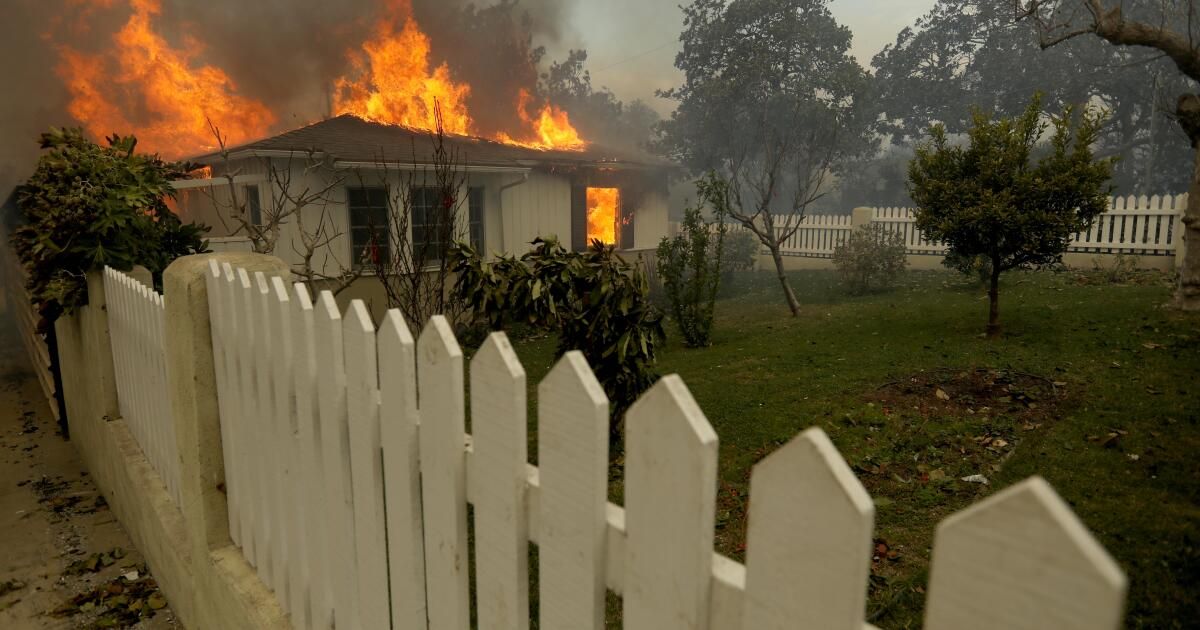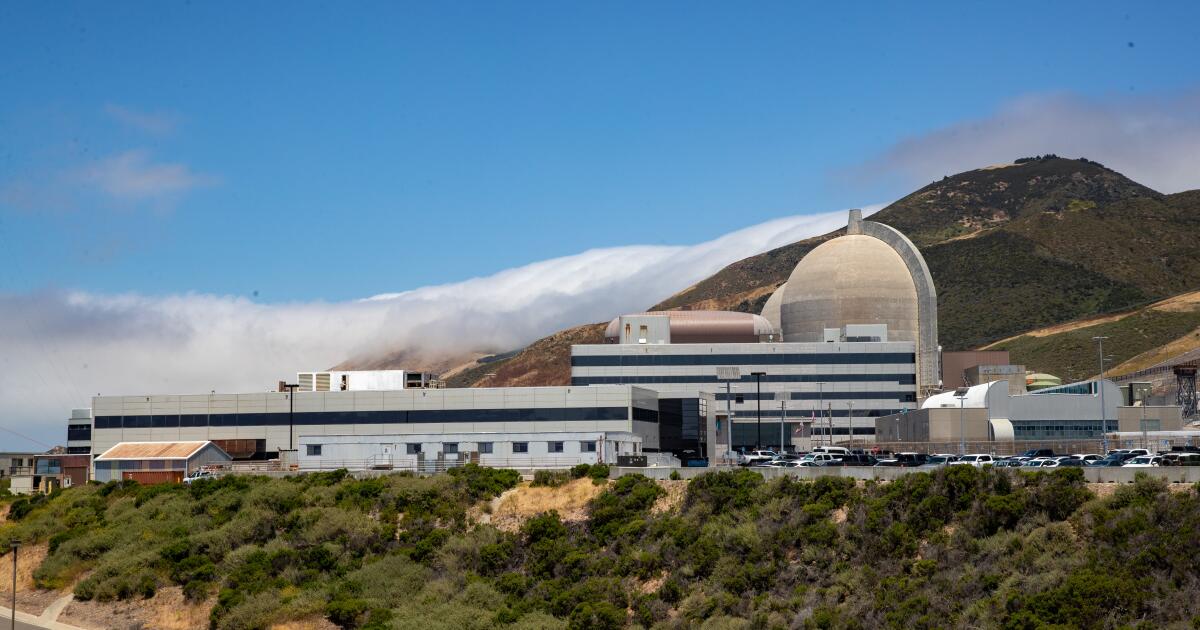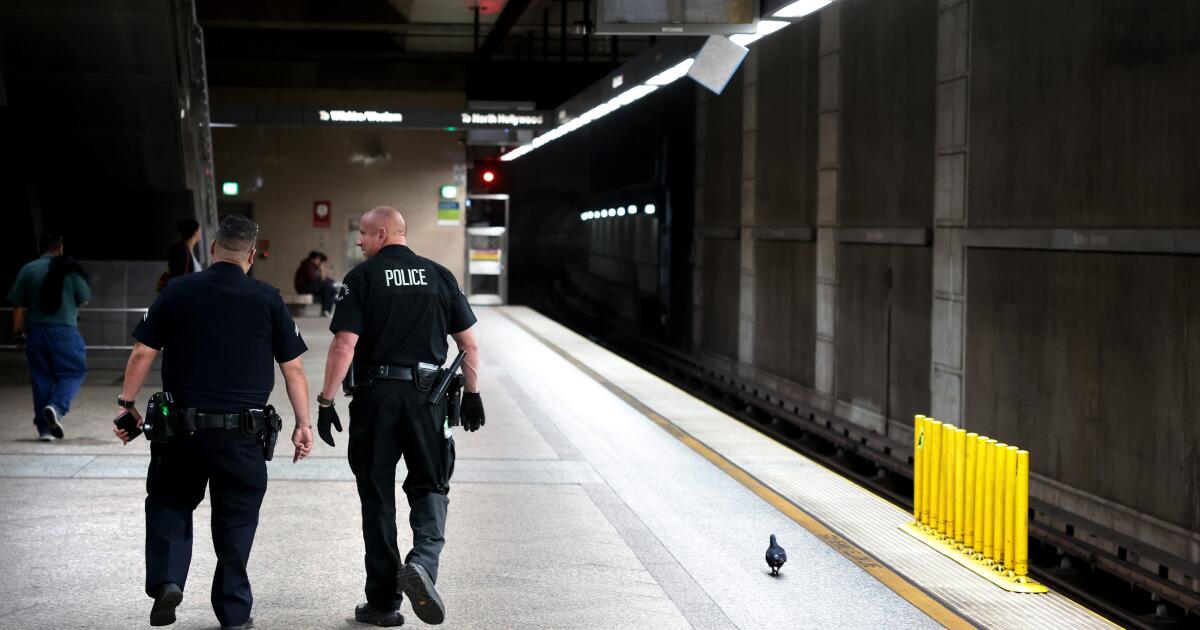Catastrophic fires in Los Angeles County have fueled the anxiety for the role of flammable vegetation around homes and other structures. Months of drought, combined with fierce winds from Santa Ana, made fires that consumed rates of up to three soccer fields per minute.
And the long data mandate to eliminate brushes and trees around a building to create “defensible space” against fire did not always matter. Most of the structures lost in the fires of Eaton and Palisades, 16,248, according to Cal Fire in this letter, seem to have been lit by other buildings, not by vegetation. The marked images of the devastation of the fires are often shown intact, green and non -burned plants and trees, surrounding the incinerated ruins of the buildings.
Fire driven by strong winds have less to do with the direct structure of a structure that on missiles: fire spiders – burning pieces of vegetation or structures – and especially embers – small ardor particles. Fire brands in particular can blow many miles ahead of the front front front, starting new fires. This “stain” was a critical factor in the damage scale done by the fires of Eaton and Palisades. The embers, shot up in a building as if from a spark cannon, the surface of a structure is listed and fed up or, worse, find shapes inside it, lighting it from the inside, regardless of what is made.
In extreme conditions, no amount of free space can guarantee protection. A moment of unwanted clarity arrived in the Fuego de Tubbs 2017 in Santa Rosa, California, when the winds that approach the force of the hurricanes blew sparks on the 101st of eight lanes and then on a arterial road, which lit a Kmart that was surrounded by asphalt parking, burning it to the ground. In fact, too much cleaning can in fact leave vulnerable structures, with nothing that slows down the winds driven by the wind.
Given what we know, we can, and need, to have gardens around our buildings, but the gardens designed and treated with fire in mind. The most recent guidelines, including those recommended by the Los Angeles County Fire Department, specify gradually increased areas of the planting that radiates from the walls of a structure.
In the first five feet – zone 0 – Everything must be non -fuel: concrete, stone, gravel or a similar material. Traditional foundation plantation is out, just like the wooden mulch.
Auxiliary wooden structures should not be joined to the building. It is not a wooden fence and is definitely not a wooden cover. This particular change can be difficult to accept for Californians who appreciate the inner-exterior life. In the city of Paraíso in Northern California, which was almost destroyed by the 2018 camp fire, a proposed rule against wood roofs linked to the houses, strongly backed by firefighters and scientists, was rejected by the remaining residents .
But there are options: first, when separating the wood part from the roof or the close of the structure in at least five feet of fire resistant material: metal or cementary tables. The covers could also be independent. We do not need to lose our decks completely, but we have to rethink them.
Zone 1, the next 25 feet of the walls of a building, is where a garden can prosper. Paradoxically, plants rooted in a deep and humid floor offer better protection here than a flat and inorganic surface. This is because well -laugh plants have a high “fuel moisture”, which inhibits ignition and captures and spots of flying embers. Plantations in zone 1 must be low, and not very flammable, more green leaves than woody stems. Lush succulent or covers such as Star Jasmine are better than Rosemary, for example.
For the segment closest to your home, the traditional grass is good, but an alternative that requires less water and cut would be even better: native seizures or cylakers, or non -national land covered such as Kurapia. Beyond this first segment of zone 1, use low bushes, not too spaced, perhaps interspersed with non -combustible paths or courtyards. The key is to achieve a balance between the heights and the mass of vegetation, without creating dense bushes.
Zone 2 extends more than 25 feet from the house, where we can have larger bushes and carefully placed trees. In the oldest iterations of “defensible space”, the trees were anathema, but now we recognize their potential benefits. They provide shadow, which is destined to another primary objective of intelligent landscape design: climate resilience. And a new investigation shows that some trees with dense and hard leaves, such as Native Coast Live Oaks, can act as a “receiver glove”, stopping and knocking off flying embers before reaching a building.
More than 100 feet of a structure, the modification of vegetation has little effect on its fire survival. However, the local regulations of the Fire Department may require “brush -free space” up to 200 feet away. Wherever its property ends in an urban environment, it is better to have perimeter walls than hedges. Working with neighbors to coordinate landscape strategies, especially where different buildings overlap, will amplify success.
Plants in the right place in the landscape are never simply “fuel.” They provide beauty, enjoy and habitat for wild nature and crucial protection against fire.
Wade Graham is a writer, historian and landscape designer with a practice based on Los Angeles. Wadegraham.com












